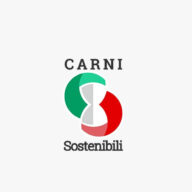
The quality of Italian meat and cured meat
The so called “Made in Italy” is known all over the world as a synonym of quality and genuineness. In fact, if we speak about Italian meat and cold cuts, local products are the healthiest and safest. Let’s see why the quality of Italian meat is superior and how to recognize it.
Food safety regulations in Europe are very strict and in Italy controls are particularly scrupulous. They are also more numerous than any other European country, as they concern all potential contaminants and in every step of the production chain. The reason is the will of detecting any irregularities, ensuring that the guarantee of quality and safety coming from Italian productions have no equal in the world.
In particular, the administration of promoting growth drugs to animals, hormones or harmful compounds such as arsenic, which is instead added to the feed of “made in USA” chickens, in Europe and in Italy is categorically prohibited. And what about antibiotics? They are regulated so that they do not have dangerous residues for the consumer, whereas in non-European farms these substances can be freely used.
In this regard, the National Residual Plan (PNR) is a surveillance plan developed to reveal the abusive administration of banned substances, to verify the compliance of residues of veterinary medicinal products with the Maximum Residue Limits (MRL) and the maximum quantities of environmental contaminants set by national and EU legislation.
The Italian system is one of the most organized worldwide, thanks to the approximately 4,500 public veterinarians involved, to the ordinary controls and to the complete traceability of the products ensuring that more than 99.9% of controls on meat and cured meats consumed in Italy are in compliance with the legal requisites.
Moreover, the whole livestock production chain is controlled and guaranteed by traceability with the “From the field to the table” system. All this allows to monitor and reconstruct every link in the production chain, starting from what is done in the breeding, feeds given to animals and what happens during all the following stages: transport, slaughter, distribution in points of sale; until the arrival on our tables, constituting an important control and qualification tool.
Even the processing methods are totally different in the “Belpaese”: foreign products of processed meat, like the famous American “sausages“, are highly processed, using additives and artificial preservatives potentially toxic and prohibited in Italy, such as some dyes derived from oil. The Italian production instead, of both fresh and preserved meat, boasts traditional methods in addition to attention for environmental sustainability and the link with the territory.
The quality of Italian meat, salami and sausages is protected and recognizable thanks to the informations on the label, which provides ample guarantees to the consumer, who can purchase these products in absolute safety. Besides, the large amount of food specialties recognized and defended by the PDO (Protected Designation of Origin), PGI (Protected Geographical Indication) and TSG (Traditional Specialty Guaranteed) schemes, for which Italy is a leader in Europe, helps to certify the high quality of “Made in Italy”. These productions must comply with strict disciplinary processing and origin of raw materials, which guarantee the typicality.
Among the “Made in Italy” excellences we can find Prosciutto di Parma (Parma Ham), Prosciutto di San Daniele, Cotechino di Modena, Finocchiona, Lardo di Colonnata, Mortadella di Bologna, just to name a few exaples of an invaluable heritage that must be preserved and valued, focusing the spotlight on the quality work carried out every day by all the production chain players.
The Sustainable Meat Project





